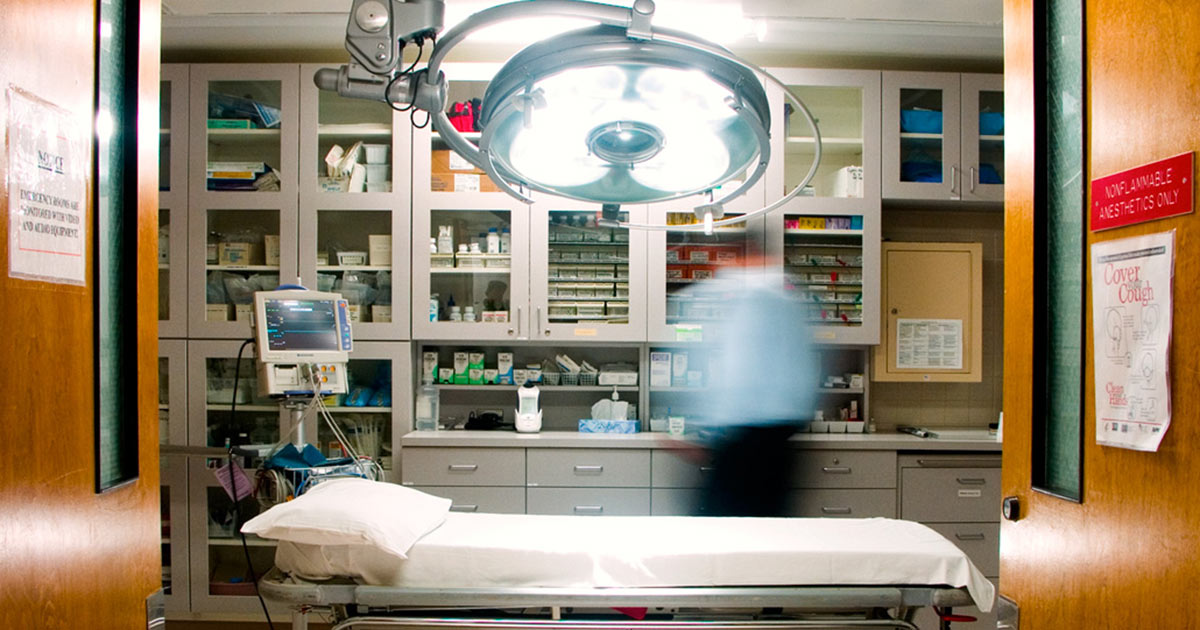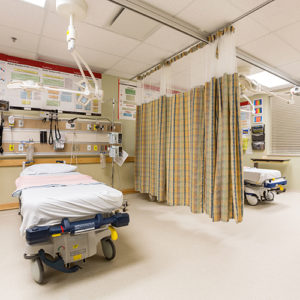
Emergency rooms: A behind-the-scenes look
A trip to the emergency department can be stressful. However, a lot of that stress comes from fear and a lack of understanding of how the system works. To help alleviate some of this anxiety, I am peeling back the curtain so you’ll know what to expect the next time you visit the emergency department.
Emergency departments’ number one purpose is to be ready to deal with emerging, life-threatening situations. While they are there for non-life threatening problems, they have to stay prepared and operate as if an emergency exists.
Because of this, emergency departments can be the most praised and often most ridiculed departments in hospitals. A person with a fractured arm, which is an emergency, might have to wait while providers help someone facing a life and death situation.
Typically, an emergency department is attending to several patients at once with a nurse to patient ratio of 1:3 – one nurse to three patients. In many emergency departments, the physician and mid-level providers will have even more.
Who’s next?
 When you arrive at an emergency room, a registration clerk will greet you and ask how they can help. They will need your basic information to get you into the system for your electronic medical record. A registered nurse will then triage you, and decide where you fall in the line for care.
When you arrive at an emergency room, a registration clerk will greet you and ask how they can help. They will need your basic information to get you into the system for your electronic medical record. A registered nurse will then triage you, and decide where you fall in the line for care.
The level of care a patient needs, and not when they arrive, determines the order we treat patients. A sore throat or an earache is not a life-threatening condition when compared to chest pain, stroke symptoms or trauma. If the emergency room is busy with patients that are sicker, the emergency department staff will do everything thing they can to get you into a provider as fast as possible, but there may be an extended wait before being seen.
If a patient has a complicated medical situation, then it may take longer for the physician to care for them. Also, we know when an ambulance is bringing a critical patient. So, it might seem like we have an open bed, but in five minutes a patient in crisis will be arriving. We plan for these events, and OSF nurses have established orders that allow them to begin the care of the patient to speed things up.
You make it to a room
 Your providers train in advance life support and trauma. They also work hard to keep you informed and involved in your care. One way that this is done is through the use of a whiteboard where information is provided to keep you up to date. At OSF HealthCare, we call these Care Boards. Our Care Boards tell you who is helping you and what tests you will need.
Your providers train in advance life support and trauma. They also work hard to keep you informed and involved in your care. One way that this is done is through the use of a whiteboard where information is provided to keep you up to date. At OSF HealthCare, we call these Care Boards. Our Care Boards tell you who is helping you and what tests you will need.
Keep in mind that testing and imaging requires more time and depends on the test, and how busy the lab is with other tests. Also, some tests can be read in a few minutes while others may take as long as an hour. These procedures are a critical step in diagnosing you and developing a treatment plan.
The physician will review the test results, write necessary prescriptions and prepare your discharge instructions. Your attending nurse, who handles your discharge, will then speak with you. You will either move to inpatient status at the hospital or sent home.
Once the nurse starts your discharge process, it is their responsibility to help you understand your treatment plan, including your diagnosis and any prescriptions you need. The emergency room physician may want you to follow-up with your physician. At OSF Emergency Departments, the staff can help you arrange your follow-up appointment.
What you can do
There are a few things you can do to make the process faster.
Come prepared with:
- A list of your medications
- A list of allergies and the type of reactions you experience
- Clear and concise answers to the providers’ questions
If you are going for a non-life threatening condition, there is no real “best time” to go. Emergency departments are dynamic places that can go from empty to full in less than 10 minutes.
Time in the emergency department can seem to crawl. And while it may look like the staff is not busy or rushing around, in all actuality, they are swamped. However, it would be best if you still came to the emergency department for any condition that you believe needs immediate attention. But if you have a situation that could be addressed in a clinic, such as a sore throat, cold-like symptoms, earaches, then OSF PromptCare, OSF OnCall Urgent Care or OSF OnCall might be a better option for you.